- Stay Connected
 Abraham Lincoln
If given the truth, the people can be depended upon to meet any national crisis...
Abraham Lincoln
If given the truth, the people can be depended upon to meet any national crisis...
 Guildford news...
for Guildford people, brought to you by Guildford reporters - Guildford's own news service
Guildford news...
for Guildford people, brought to you by Guildford reporters - Guildford's own news service
Around The Very Top: Not Too Proud To Push
Published on: 29 May, 2015
Updated on: 1 May, 2022
Martin Giles is cycling around the top of northern Scotland with his son Tom. This is a report on the second leg of their tour, from Overscaig to Rhiconich. Find other reports in the series by searching on: “Around The Very Top”.
Waking early, having slept very soundly, I looked out of the window. It was not raining. There was a rainbow hovering over Loch Shin. Tom was still asleep so I returned to my bed wondering if the rain would stay away despite the poor BBC forecast.
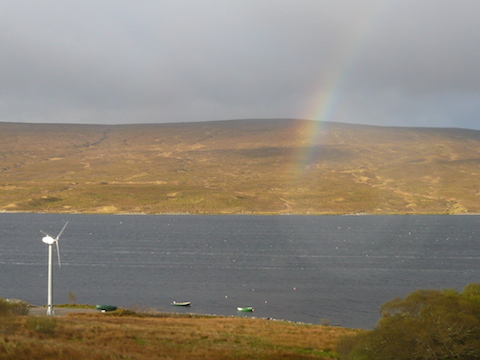
The rainbow over Loch Shin. In the foreground the wind turbine which might presage a whole wind farm on the opposite bank.
We had a very good breakfast. I enjoyed a kipper. The breakfast room overlooked the loch and a busy bird table populated mainly by chaffinches while swallows and martins wheeled overhead.
In the foreground was a small wind turbine that our host said provided a quarter of the electricity needed for the hotel. In this wind I was surprised it was not providing most of the power for Inverness.
Our host said the installation had been paid for by SSE (formerly Scottish & Southern Energy). I suspected it was a sweetener for a proposed wind farm on the opposite side of the loch. If the project goes ahead he will also get some return on the power it puts into the national grid.
We got going for a while the rain held off. Following the bank of the loch the gradients were not severe. After a few miles we were on the banks of Loch Ghnama, what had appeared from a distance to be an island or an unlikely submarine turned out to be a fish farm, salmon presumably.
A few more miles, by Loch Merkland, there was a standing stone informing us that we were entering “Mackay Country”. Was it a warning? Should we be on the look out for plaid clad, bands of MacKays roaming the hillsides looking to enforce their territorial rights?
After five minutes none had appeared. I relaxed. Anyway, who was to say that they would object to the Clan MacGiles?
At fairly frequent intervals large road signs had been placed in motorway blue advising drivers to pull in and allow faster vehicles to pass. It seemed unnecessary really. There were not many vehicles and hold ups seemed unlikely.
And the unnecessary signs appeared incongruous in such a wild, unspoilt terrain. Generally throughout the UK I think we put up too many roads signs. We might as well put up signs saying “Danger – watch out for other vehicles”.
Other signs warned us of deer crossing the road. I had been looking up at the hills to see if could spot any but if they were there they were too well camouflaged. Tom was luckier or more observant. “Deer up on top – to the right!” he shouted. I followed his pointing finger.
Camouflaged they may have been, but they had broken one of the cardinal rules of field craft that every infanteer knows: do not break a sky line. As they crossed the very top of the hill a small herd of about ten red deer were silhouetted against the sky. I rushed for my camera but the instant I was ready to release the shutter the last one moved down and they had disappeared.
We had been gradually climbing but, like the previous day, the wind seemed more of an obstacle that the gradient. We had endured a couple of showers but nothing really penetrating.
We continued up and I realised we were approaching the watershed where the hotel proprietor had said we might see golden eagles. But the wind and the rain seemed to have increased with the altitude and looking up into the rain for birdlife was not a priority.
The weather made the final stretches of the ascent, although not steep, become more and more challenging. At the summit the rain, blown straight at us by the wind, stung our faces. Keeping eyes fully open became a real challenge. We were going downhill but my speedometer told me only at 11mph and I was still pedalling.
Then my speed dropped to just 9mph. This was not so much fun. We kept going, what else was there to do? I just hoped that lower down we would be less exposed, perhaps we could even find some shelter.
Eventually, but only by small degrees, the wind did ease. The rain continued but with less force. When we had completed the descent and were once again by the side of a loch, this time Loch More, the rain too eased off and the road became dry.
“It hasn’t even rained here!” I shouted to Tom. The contrast in the last few minutes was amazing. Although there was still a headwind it was nothing to what we had just experienced. I even wondered if we should stop to have our packed lunches.
But then the rain returned and as there was no shelter we cycled on. After a few more miles towards the end of the loch there were some houses and I wondered if we might find some shelter to eat our sandwiches. The first few houses seemed unpromising but then we arrived at Achfary, a small settlement.
It was a startling contrast to the wild countryside we had just come through. This hamlet was picturesque, even manicured. It could have been in one of the pretty parts of Yorkshire. The black and white phone box colour scheme is thought to be unique.
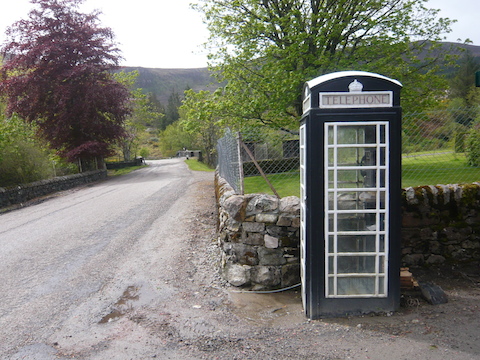
Achfary is part of the Reay Forest Estate owned by the Grosvenor family who hold the hereditary title Duke of Westminster. The village was built to house families who work on the vast game shooting and fishing estate that stretches from Laxford Bridge in the west to Kinloch in the east. Much of the village was built between 1853 and the 1870s.
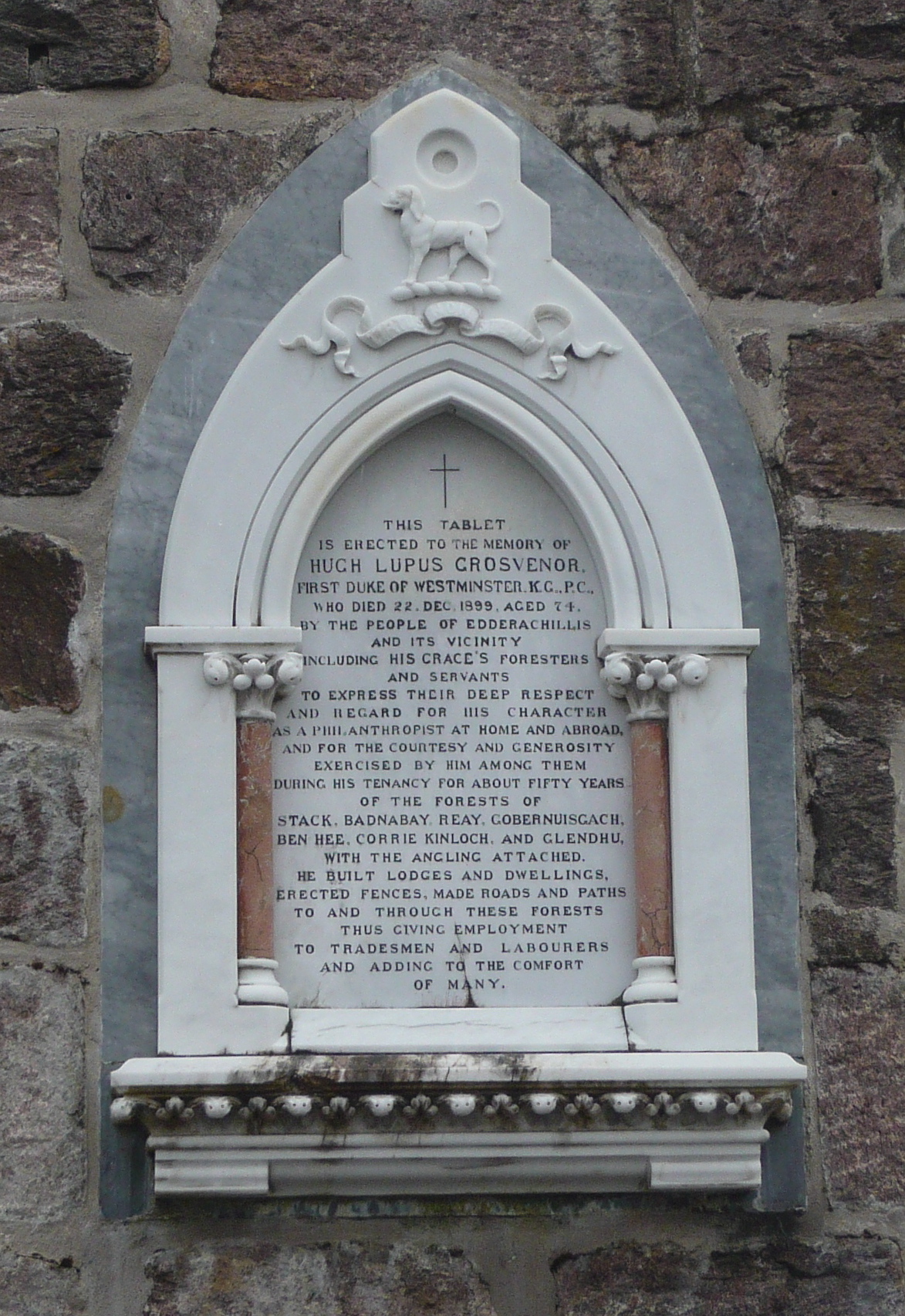
The stone tablet proclaiming the thanks of estate workers to a previous Duke of Westminster. (Click on image to enlarge.)
A stone tablet on the side of the farm was erected by local people to the memory of the First Duke of Westminster who died in 1899. Its purpose was “to express their deep regard for his character… and for the courtesy and generosity exercised by him among them during his tenancy for about fifty years…
He built lodges and dwellings, erected fences, made roads and paths… thus giving employment to tradesmen and labourers and adding to the comfort of many.” This is how Achfary came about.
Of course the Grosvenors are not short of a bob or two but it is good the see wealth used philanthropically in this way. We also benefitted, since there was a lych-gate-like affair in front of a building which, after closer inspection, was revealed to be a school.
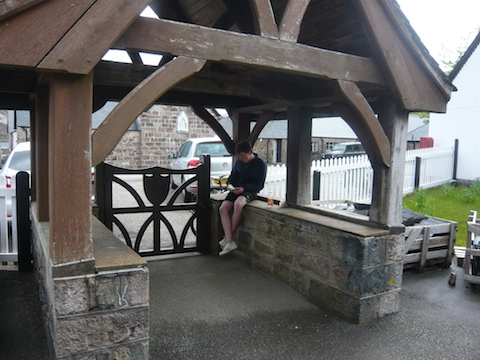
A lych gate at the front of the school provided a shelter and a seat on which we could eat our sandwiches.
I knocked to ask permission to sit in the gate and eat our lunch but school appeared to be out, presumably it was half-term, so I gave ourselves the Duke’s permission. He did not turn up to chase us off.
In fact, the locals could not have been friendlier, nodding or calling hellos as they passed. Our packed lunches supplied by the hotel contained cheese and pickle sandwiches, made with good granary bread, which suited both of us.
The cheese was red cheddar of course. Scots don’t seem to like naturally coloured cheddar without the red dye.
Entertainment was provided by local birdlife including house martins that had nested under the eves of the school and two workmen who were using a mini digger to drive in some fence posts.
They seemed to be of various heights but I suppose they knew what they were doing. Occasionally passing folk would pause to offer advice. It is always important for British workers to have a few useless watchers.
Soon after leaving Achfary we passed some neatly stacked timber. Whether it was destined to be sawn or pulped was impossible to tell. We had seen a lot of evidence of timber harvesting on the different hill sides. Presumably there was a plan so that they did not take it all at once.
Laxford Bridge came into view which meant we were approaching our second T junction of the trip in 40 miles. Our host at Overscaig had warned us not to expect too much, “Some folk expect a settlement”, he said, “but Laxton Bridge is just, well, a bridge.”
It was no shock to me. Once, years ago, travelling with my wife and my mother-in-law we had approached Ledmore Junction 20 miles or so further south. I was expecting something – a railway station seemed the minimum, even a disused railway station – but no. Ledmore Junction was just a junction between two single track roads.
Close by Laxton Bridge were some primroses at their peak. A cheerful splash of colour. They were at least a month behind those in Surrey but why not? We were a long way further north.
Close to the primroses was a pile of rubbish left by careless types who have no respect for anything much it seems. I wish they could be caught and banned from the countryside for a few years until they treat it properly.
Over the bridge we were faced with another unnecessarily large blue sign, this time informing us that the EU, in cooperation with Scotland – no mention of the UK – had funded the improvement of the road.
It was a little bit disappointing. The road became two way with bright white lines and smooth black tarmac. It seemed as out of place here as a well surfaced road might in Guildford. But it only lasted a few hundred meters and then we returned satisfyingly to the normal single track with passing places. Hardly worth the large signs.
We were still on the A838 and we had another five miles to our destination Rhiconich.
Almost immediately we were faced with a steepish hill. I was struggling and decided that I could not act like a celebrity mother, I was not too proud to push. I dismounted and pushed my heavy bike for several hundred yards up the incline.
Tom, who was pedalling as if the hill did not exist, thoughtfully got the “GoPro” film camera out to film my struggle. I tried to smile for the camera but if it appears to be more of a grimace – well the camera never lies, they say.
We were soon in the lower hills again with lochans and waterfalls. Further on, the road had been cut into the hillside, exposing starkly contrasting types of rock, pink and grey.
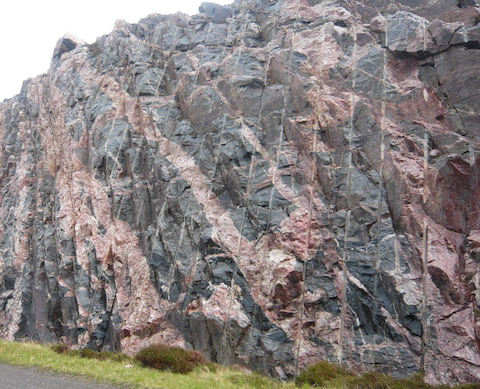
The exposed rock face I believe showing Lewisian Gneiss a metamorphic rock. the irregular colour banding might be caused by mixing while still in a molten state. Can any geologist reader confirm or explain?
I could not identify them but I was aware that we were in one of the most geologically interesting areas of Britain with some of the oldest rocks.
The cycling now was easy, the right turn at Laxton Bridge had meant a sea change in conditions. The wind was now on our backs. What a difference.
We crossed the final summit before Rhiconich and I recognised our hotel from the website images. Not that it would have been a problem to find. There were only about six buildings and one of them was a police station – how unruly could the hotel be?
The rain had stopped shortly after the bridge and even the following wind meant that we had dried out again for the third or fourth time of the day.
We whooshed down to Rhiconich – a real pleasure – and our momentum was sufficient to take us up the small incline to the hotel entrance.
I rang the bell and apologised to the man who answered for our early arrival. He seemed to have a slightly Irish accent which was later confirmed as the local accent in these parts similar to those in the Hebrides. He was hospitable and welcoming said our timing was fine.
We immediately showered and washed out our dirty clothes so as to have maximum drying time, but a room heater – necessary even in late May – meant that clothes drying would not be a problem.
Descending later for a pre-dinner drink, we encountered a lively group of charity walkers. Some of them had founded a charity a few years ago to raise money for Nepal, a cause especially necessary after the recent earthquakes.
They traded insults freely, with much mirth, and apologised continuously for their raucousness. But they need not have worried, it was very entertaining.
We were called to the dining room. It seemed very quiet after the hubbub of the walking group. The waitress, a polite young girl, told us that she was studying for her highers at the local high school that had just 44 students.
She realised that this was tiny in comparison with most British schools but at least children were no longer sent away to lodge in places the other end of Sutherland, Monday to Friday, as they had to until 20 years ago.
Sadly, to me at least, she also fully expected to have to move away to find suitable work but, she said, she would hope to return when older.
The peace of the dining room was shattered as we were finishing our puddings. The charity walkers invaded but socially included us in their jocular conversation and urged us to join them for a sing song later, which we did.
Strangely perhaps I was more familiar with the lyrics of Flower of Scotland than some of the Scots present.
It was a pleasant end to a pleasant day. The forecast for the next day was poor, especially for the morning, but as a local in Achfary had said about the weather in these parts, “Och it comes and it goes.”
I was hoping it had gone but I knew it was a long shot. Tomorrow – on to Durness.




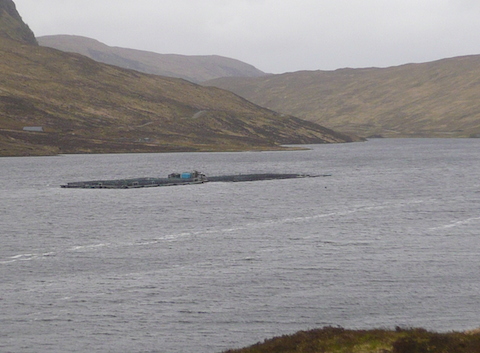
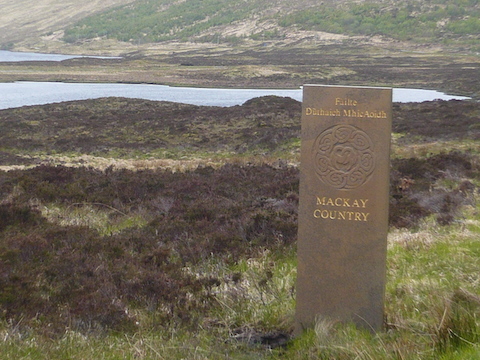

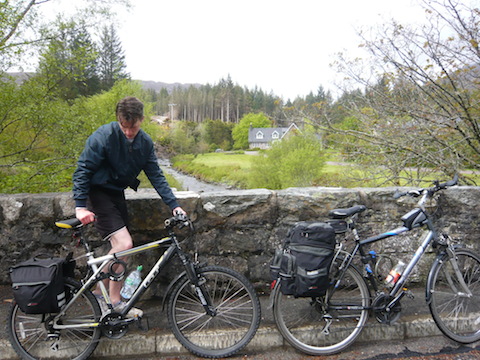
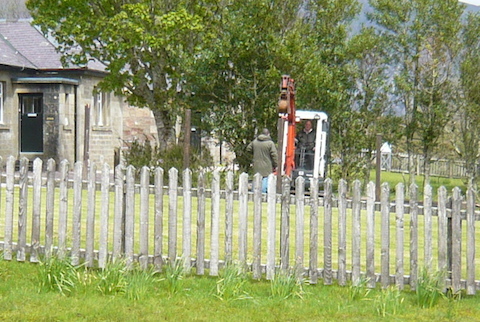

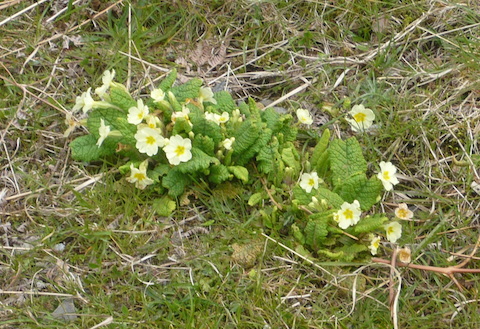









Recent Comments